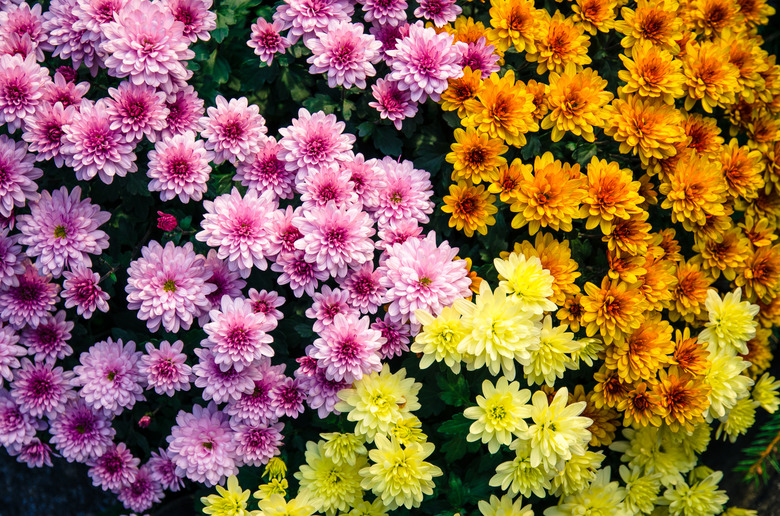Little Black Bugs On Mums
We may receive a commission on purchases made from links.
Some chrysanthemums (family Asteraceae) naturally produce a pest-repelling chemical called pyrethrum. Common pests, like Japanese beetles, spider mites and ants, stay far away from chrysanthemums as a result, but there's one pest that doesn't seem bothered by pyrethrum: aphids. If you see little black bugs on mums, suspect aphids.
Black Chrysanthemum Aphids
Black Chrysanthemum Aphids
The word "aphid" refers to thousands of species of tiny sap-sucking insects. One species is the chrysanthemum aphid, which is so-called because it only feeds on chrysanthemums. You may find other aphid species on your mums, but you can distinguish chrysanthemum aphids from the rest thanks to their dark-brown or black coloration.
All aphids eat by piercing through the stem, leaf or blossom and sucking out the sugary, nutrient-dense sap within. The plant will begin to suffer from a nutrient deficiency as a result. In severe aphid infestations, the entire plant may die.
Aphids excrete a sweet, sticky substance called "honeydew" that can attract other pests, like house flies and ants. The pyrethrum in chrysanthemums keeps these scavengers away, but it doesn't protect the plant from sooty mold, which is a fungus that grows on the honeydew. Aphids can also spread diseases among plants. In short, it's important to get rid of those little black bugs on your mums, even if the plant seems relatively healthy or unaffected.
Eliminating and Repelling Chrysanthemum Aphids
Eliminating and Repelling Chrysanthemum Aphids
Chrysanthemum aphids (and other aphid species) can be eliminated with neem oil. Saturate the leaves (top and bottom), stems, blooms and even the soil with this product, paying extra-special attention to the growing tips. If the mums are grown in pots, you may be able to turn them upside down and dunk them into a bucket of soapy water to knock off the aphids. A blast of water from the hose can accomplish the same, but it may damage the blossoms.
One or two rounds of any aphid-killing procedure may suffice for mums grown indoors, but mums grown outdoors will undoubtedly attract more aphids. For continuous aphid control, turn your garden into an oasis for predatory insects, like ladybugs and hoverflies. They should appear on their own if they have sufficient nectar (particularly from umbel-shaped flowers) to eat as a carbohydrate source. Avoid using chemical insecticides and pesticides in the garden as much as possible, as these will kill beneficial insects too.
Companion Planting to Repel Aphids
Companion Planting to Repel Aphids
You can also intersperse aphid-repelling plants among the chrysanthemums for a natural approach. The ideal companion plants for chrysanthemums are strong-scented herbs. It's believed that the odor of plants like garlic (Allium sativum), basil (Ocimum basilicum) or mint (Mentha spp.) overwhelms the aphids' olfactory system. As a result, they're too disoriented to sniff out the nearby chrysanthemums, and they travel elsewhere for a meal.
Allow the garlic to flower to attract predatory insects. Parsley (Petroselinum crispum) and dill (Anethum graveolens) will also produce flowers that attract these beneficial insects. Avoid planting nasturtium, as it will attract even more aphids to your garden.
